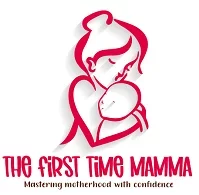Breastfeeding is not an easy task. For some mothers, it may come naturally, while for others it requires patience, tolerance and a lot of practice. Even for the mothers that enjoy breastfeeding, there may come a time when you are away from your baby and he/she has to feed from the bottle. As difficult as breastfeeding may get sometimes, weaning from breastfeeding is sometimes even more challenging.
Hey! By the way… any links on this page that lead to products on Amazon are affiliate links and I earn a commission if you make a purchase. Thanks in advance – I really appreciate it! .
There could be a number of reasons why a mother would want to wean baby from breastfeeding to formula. Some mothers switch due to medical purposes while others use it for convenience or due to their working schedule. Common reasons behind this include:
- Lack of sleep due to nighttime feedings.
- End of maternity leaves.
- Baby has difficulty in latching.
- Low supply of milk.
- The mother can’t pump enough when she is away from the baby because of the exhausting work schedule.
Whatever your reason may be, you can wean a baby from breastfeeding to formula completely or you can just supplement with formula while continuing with breastfeeding. It’s perfectly all right to give your baby both. This way your baby can get their necessary nutrients from breast milk while also giving you the liberty to use a formula as a backup plan.
You may find the following tips helpful to wean baby from breastfeeding to formula.
1. The process of switching should not be abrupt. Take your time and do it gradually. Reduce your breastfeeding sessions one by one. Replace one of your breastfeeding sessions with the formula for few days and see how it goes and then gradually swap the breastfeeding sessions with formula. Usually, babies won’t give up their morning and nighttime session easily, even if you offer formula. So, start with daytime sessions first and then slowly make your way to the morning and then night. This will keep your breast from getting painfully engorged and your baby will also be able to adapt to a formula more easily.
2. Once you have made the decision of weaning to formula, the next step is to choose an appropriate bottle for your baby. This can take a lot of trying and experimenting before you can find the perfect bottle for your little one. You would want to choose a bottle that closely resembles a breast and is easier to hold on to for the baby such as the Comotomo Baby bottles. A bottle with a wide base and slow flow nipple will do the trick.
2. Try giving expressed breast milk in the bottle first if your baby is exclusively breastfed so that the baby can learn how to feed from a bottle. Then switch with formula. As feeding from a bottle requires a different tongue motion than a breast.
3. Offer a bottle before your baby gets too hungry or tired. Pay attention to your baby’s cues.
4. Distract the baby during the session with singing, rocking or holding a toy if they try to refuse.
5. The baby may want the breastmilk if you are the one offering the bottle, but if you leave the room, they won’t have any choice but to accept the formula. So, ask your partner or any other adult to offer the baby bottle if he/she is not taking formula from you and leave the room because babies can recognize their mother’s scent.
6. Offer her your breast, a pacifier or your finger. As she beings to suck on it, quickly replace it with the formula.
7. If your baby repeatedly refuses to take the formula and starts crying, then stop and comfort her. You can try again when she is calm, or perhaps at another time. Also, never try to force your baby to feed from the bottle as this can make her hate bottle feeding.
8. To make yourself comfortable from engorgement you can try putting some Cabo Cream on your breast. It is not recommended for regular old engorgement. So, if you are sure about quitting breastfeeding, then use it to take your milk supply away. You can also use some sage tea to diminish your milk supply. In very desperate cases, Sudafed can be used, but it is a medication and should only be used if your doctor deems it necessary.
9. To make this process a little easier for the baby, let them hold on to a favorite soft toy or a soft blanket. Anything they can hold on to and that comforts them.
10. If your baby refuses a bottle and is older than nine months then you skip straight to a sippy cup. In this way, you won’t have to go through the effort of weaning a baby from bottle to cup. Use a non-spill plastic bottle with a mouth that closely mimics a nipple. Start with water first so that the baby can get the hang of it and then work your way to the formula.
Breastfeeding is not just a way to feed your baby, it also soothes and comforts your baby. It makes them feel closer to the person they love the most. Weaning is not easy for anyone. Whether the baby loses interest first, or it’s the mother who initiates it, there will be emotional and physical difficulties in both situations. If the baby loses interest, the mother may feel rejection like she is no longer needed anymore. This may make them sad and upset.
The same goes for babies if the mother weans then the baby will feel rejected and become fussy and cranky, especially if co-sleeping was a part of breastfeeding. It can get very difficult if your little one is a toddler. They can throw tantrums and get angry with mom and give her a very hard time. The closeness that goes with breastfeeding is what makes mom and baby miss it the most.
So, be sure to shower lots of extra attention to the baby during the weaning process. Regardless of your child’s age, if you want to make the transition process easier and manageable, then find other ways to maintain a close emotional and physical bond with your child. Remember, be patient and do lots of trial and error before you can wean baby from breastfeeding to formula. So, keep trying mommy!

